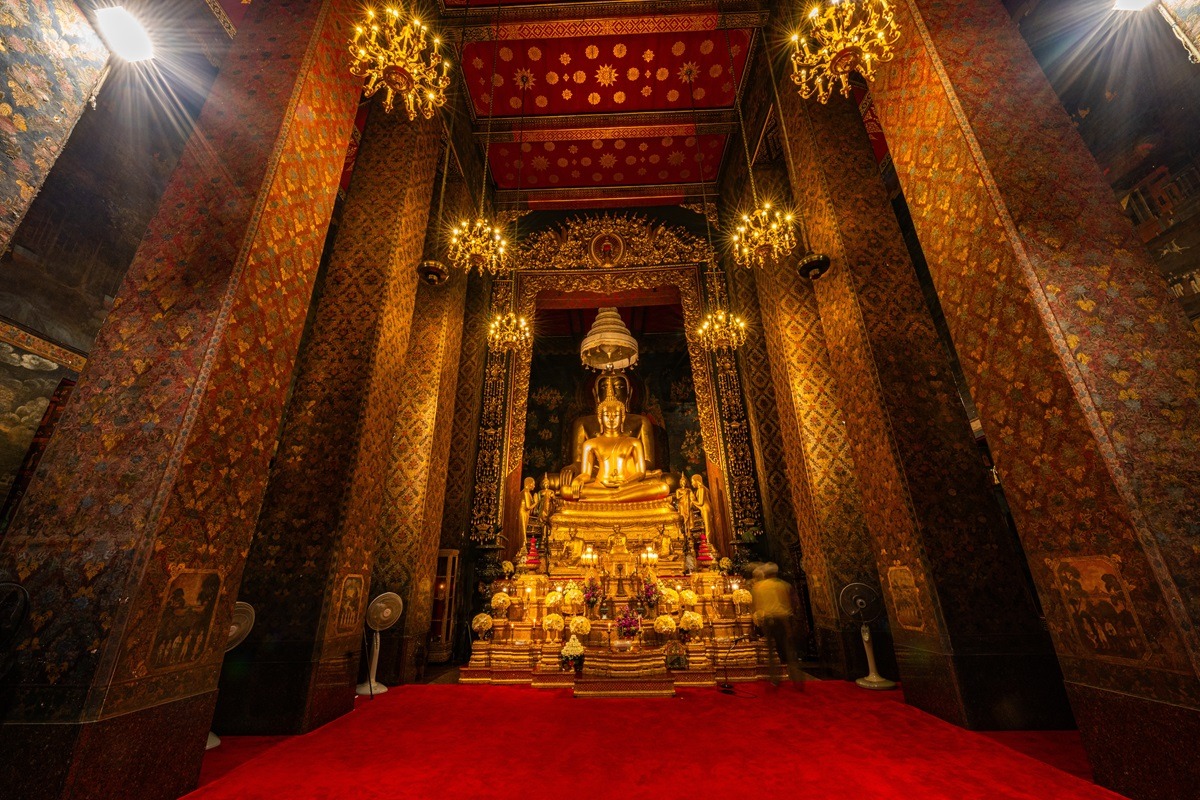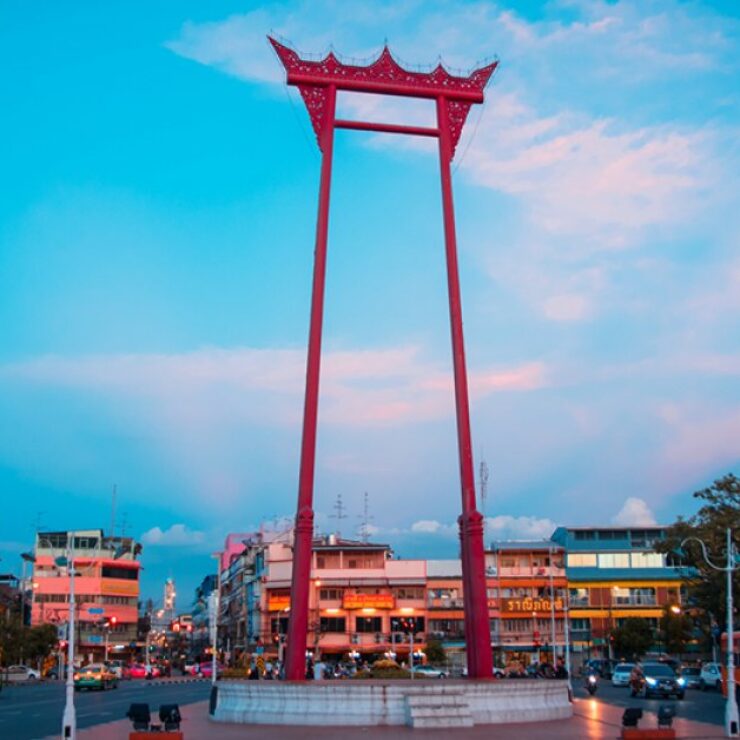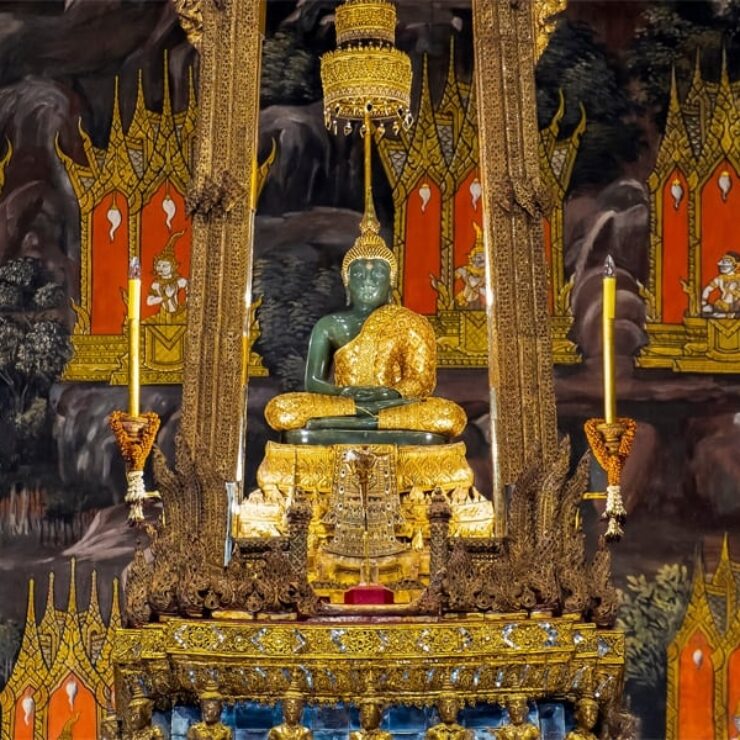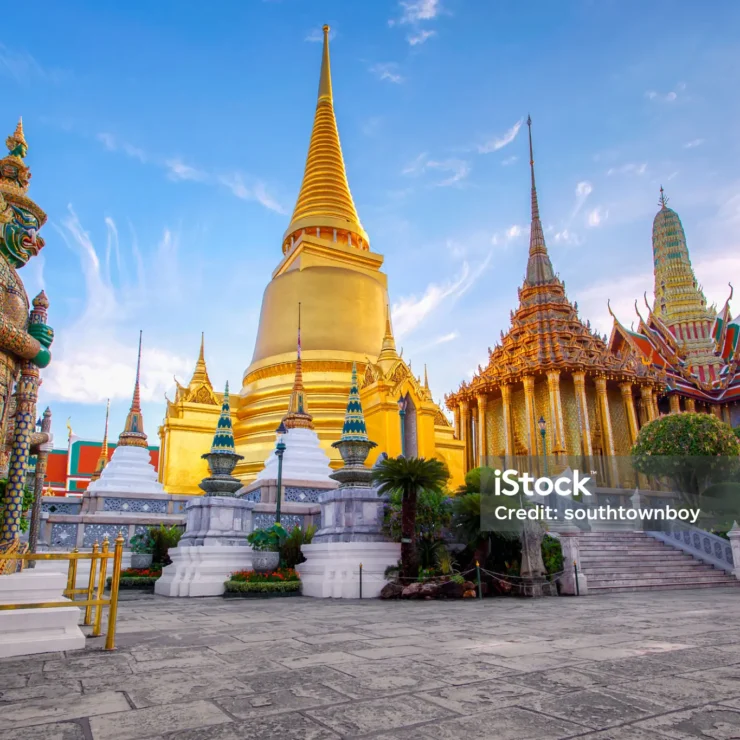バンコクの中心部、賑やかなディンソー通りからすぐの場所に、都会の喧騒から逃れて静かなひとときを過ごせる隠れた名所、ワット・ボーウォン・ニウェートがあります。ワット・プラケオやワット・アルンといった有名な寺院に目が奪われがちな観光客ですが、ワット・ボーウォン・ニウェートは独特の魅力と歴史的意義を秘めており、静寂とタイ文化とのより深い繋がりを求める人にとって必見の場所です。この包括的なガイドでは、豊かな歴史から、静かに散策するための実用的なヒントまで、ワット・ボーウォン・ニウェートを訪れる際に知っておくべきあらゆる情報を網羅的にご紹介します。
ワット・ボーウォン・ニウェートを訪れる理由
ワット・ボーウォン・ニウェート(別名ワット・ボーウォン)は、バンコクにあるありふれた寺院ではありません。プラナコーン地区、民主記念塔とカオサン通りの近くに位置するこの聖地は、チャクリー王朝と深く結びついた最高級の王室寺院です。タイ王族にとって、即位前のラーマ4世(モンクット王)をはじめとする多くの王族にとって、精神的な安息の地でした。寺院の静寂な雰囲気、精緻な建築様式、そして豊かな緑は、人混みを避けて本物のタイの精神性を体験したい旅行者にとって理想的な場所です。
歴史愛好家、スピリチュアルな探求者、あるいはバンコクの人里離れた場所を探索したいだけの観光客など、誰にとってもワット・ボーウォン・ニウェートは特別な体験を提供してくれます。地元の飲食店やショップが立ち並ぶ活気あるディンソー通りに近いため、バンコク旅行のプランに簡単に組み込むことができます。
ワット・ボーウォン・ニウェートの簡単な歴史
ワット・ボーウォン・ニウェートは、ラーマ3世の治世下、1826年に建立されました。当初はワット・マイと名付けられていましたが、ラーマ4世によってワット・ボーウォン・ニウェート・ヴィハーラと改名されました。ラーマ4世は即位前に14年間この地で僧侶として過ごしました。この寺院は、仏教の学問と瞑想の中心地として、特にラーマ4世自身によって創始された上座部仏教のより厳格な宗派であるタマユット・ニカーヤ派にとって、非常に重要な意味を持っています。
この寺院の最も注目すべき特徴の一つは、14世紀に古代スコータイ王国から移築された神聖な仏像「プラ・プッタ・チンナシ」です。また、ワット・ボーウォンはタイ王族の多くの永眠の地であり、彼らの遺灰は境内に美しく造られたチェディ(仏塔)に安置されています。
ディンソーロードからワット・ボーウォン・ニウェートへの行き方
ワット・ボーウォン・ニウェートは、特にバンコクの旧市街を散策する方にとって、アクセスが非常に便利です。ラチャダムヌーン通りに平行して走る短い通り、ディンソー通りは寺院からすぐ近くです。行き方は以下の通りです。
徒歩
ディンソー通りを歩いている場合は、民主記念塔近くのラチャダムヌーン通りとの交差点まで歩いてください。そこから北へ5~10分ほど進むと、バンランプー地区を少し過ぎた右手にワット・ボーウォン・ニウェートの入り口があります。地元の商店や歴史あるショップハウスを通り過ぎながら、気持ちの良い散歩を楽しめます。
公共交通機関をご利用の場合
- BTS/MRT最寄りのBTS駅はナショナルスタジアムですが、かなり離れています。そこからはタクシーまたはトゥクトゥクをご利用ください。または、MRTでサムヨット駅まで行き、そこからタクシーまたは徒歩でお越しください。
- バスラチャダムヌーン通りを通るバスは2番、15番、47番、79番線など複数あります。民主記念塔の近くで下車し、ワット・ボーウォンに向かって歩いてください。
- ボートチャオプラヤー エクスプレス ボートに乗ってプラアーティット桟橋まで行き、そこからバンランプーの魅力的な通りを約 15 分歩きます。
タクシーまたはトゥクトゥク
バンコクではタクシーやトゥクトゥクが広く利用できます。運転手に「Wat Bowon Niwet」と伝えるか、タイ語で住所を提示してください: วัดบวรนิเวศวิหาร。カオサン通りなどの近隣エリアからは約 50 ~ 100 バーツの料金がかかります。
ワット・ボーウォン・ニウェートで期待できること
バンコクの観光客で賑わう寺院とは異なり、ワット・ボーウォン・ニウェートは静かで、より瞑想的な体験を提供します。ここでの楽しみ方をご紹介します。
1. 平和な雰囲気
寺の門をくぐると、街の喧騒は消え去り、穏やかな葉のざわめきと僧侶たちの柔らかな詠唱が耳に届きます。境内は古木々に覆われ、涼しく落ち着いた雰囲気が漂い、瞑想やくつろぎのひとときに最適です。
2. 素晴らしい建築物
寺院のデザインは、精緻なディテールを随所に取り入れたタイの伝統建築を反映しています。本堂(ウボソット)には、金色に彩られ、仏教物語を描いた美しい壁画に囲まれた、崇敬すべきプラ・プッタ・チンナシ仏像が安置されています。純白と金色に彩られた仏塔、特に王族の遺灰を安置する仏塔は、もう一つの見どころです。
3. 文化的・精神的な洞察
ワット・ボーウォン・ニウェートは現在も活動している寺院です。僧侶たちが日々の儀式や説法を行っている様子を目にすることができるかもしれません。運が良ければ、瞑想や仏教の儀式を垣間見ることができるかもしれません。寺院の作法を守れば、静かな瞑想の時間に参加することも可能です。
4. 歴史的意義
タイ王室とのゆかりが深い歴史を持つこの寺院は、さらに深い意味を持っています。境内には王室の歴史を物語る銘板や記念碑があり、歴史愛好家にとって魅力的なスポットとなっています。
ワット・ボーウォン・ニウェートを訪れる際のヒント
敬意を持って楽しく訪問するために、以下のヒントに留意してください。
服装規定
タイの他の仏教寺院と同様に、控えめな服装が求められます。男女ともに肩と膝を覆う服装を心がけてください。ショートパンツ、ノースリーブ、露出の多い服装は避けてください。ご不安な場合は、スカーフやサロンなどをご持参ください。
行動
- 静かに話し、大声での会話は避けてください。
- 寺院の建物に入る前には靴を脱いでください。
- 仏像や僧侶に足を向けないでください。これは無礼とみなされます。
- 僧侶や儀式の写真を撮る前に許可を求めてください。
訪問に最適な時期
ワット・ボーウォン・ニウェートを訪れるなら、早朝か夕方遅くが最適です。気温が下がり、光も写真撮影に最適で、寺院も比較的混雑していません。日中は暑さが厳しくなるため、避けましょう。
入場料
ワット・ボーウォン・ニウェートへの入場料は無料ですが、寺院の維持管理のため、寄付をお願いいたします。本堂付近に寄付箱が設置されていますので、ぜひお探しください。
近くの観光スポット
すでに Dinso Road の近くにいるので、近くにある他のランドマークを探索することを検討してください。
- 民主記念塔: タイの立憲君主制への移行の歴史的シンボル。歩いてすぐの距離にあります。
- カオサン通り: 寺院から約 10 分のところにある、バー、レストラン、ストリート マーケットが集まるバックパッカーの中心地。
- 王宮とワット・プラケオ: 少し遠いですが、丸一日観光する価値はあります。
バンコク旅行の旅程にワット・ボーウォン・ニウェートを加えるべき理由
バンコクは、現代と伝統、混沌と静寂が融合するコントラストの街です。ワット・ボーウォン・ニウェートはまさに後者を体現する寺院で、喧騒を離れ、タイの精神的なルーツに触れることができる聖域を提供しています。ディンソー通りに近いため、旧市街散策の途中に立ち寄りやすく、あまり知られていないため、混雑した市内の寺院よりも本格的な体験ができます。
静寂の約束、歴史の魅力、タイ建築の美しさに惹かれる方も、ワット・ボーウォン・ニウェートは忘れられない印象を残すでしょう。さあ、ウォーキングシューズを履いて、ディンソー通りから少し歩き、この素晴らしい寺院に秘められた静寂を解き放ちましょう。
最後に
ワット・ボーウォン・ニウェートを訪れるのは、バンコクの中心部にひっそりと佇む秘密のオアシスを発見したような気分です。静寂に包まれた雰囲気と、文化的・歴史的な重要性が融合し、タイの伝統を深く理解したい旅行者にとって、まさにうってつけの場所です。今すぐご旅行を計画し、バンコクの隠れた名所の一つを巡りながら、ワット・ボーウォン・ニウェートの静寂に身を委ねてみませんか。
ワット・ボーウォン・ニウェートにはもう行かれましたか?ぜひ下のコメント欄で体験談を共有してください。バンコク旅行の計画についてご質問があれば、ぜひお聞かせください!天使の街バンコクでユニークな体験を探している他の旅行者にも、このガイドをぜひシェアしてください。




